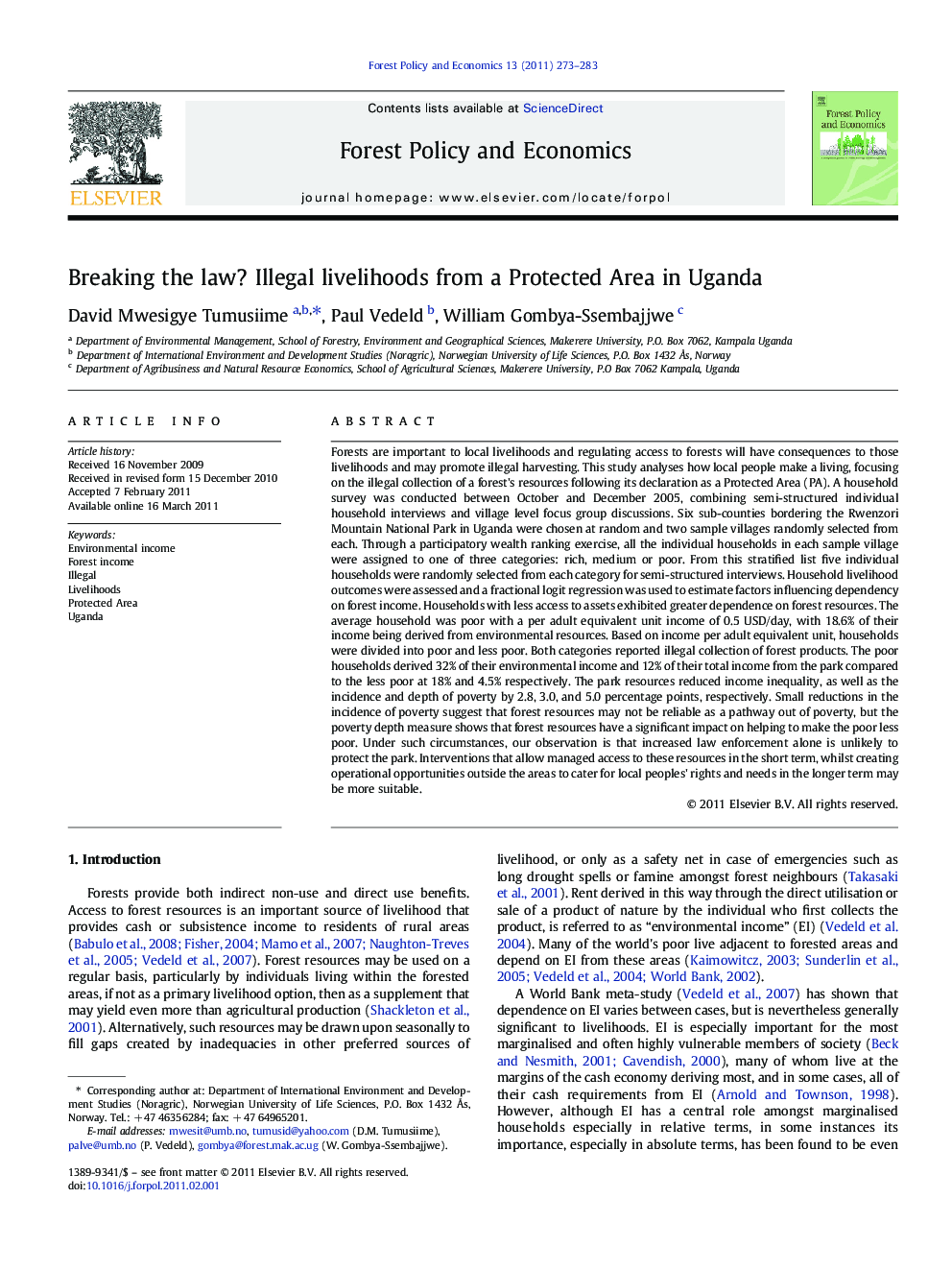| کد مقاله | کد نشریه | سال انتشار | مقاله انگلیسی | نسخه تمام متن |
|---|---|---|---|---|
| 91437 | 159800 | 2011 | 11 صفحه PDF | دانلود رایگان |

Forests are important to local livelihoods and regulating access to forests will have consequences to those livelihoods and may promote illegal harvesting. This study analyses how local people make a living, focusing on the illegal collection of a forest's resources following its declaration as a Protected Area (PA). A household survey was conducted between October and December 2005, combining semi-structured individual household interviews and village level focus group discussions. Six sub-counties bordering the Rwenzori Mountain National Park in Uganda were chosen at random and two sample villages randomly selected from each. Through a participatory wealth ranking exercise, all the individual households in each sample village were assigned to one of three categories: rich, medium or poor. From this stratified list five individual households were randomly selected from each category for semi-structured interviews. Household livelihood outcomes were assessed and a fractional logit regression was used to estimate factors influencing dependency on forest income. Households with less access to assets exhibited greater dependence on forest resources. The average household was poor with a per adult equivalent unit income of 0.5 USD/day, with 18.6% of their income being derived from environmental resources. Based on income per adult equivalent unit, households were divided into poor and less poor. Both categories reported illegal collection of forest products. The poor households derived 32% of their environmental income and 12% of their total income from the park compared to the less poor at 18% and 4.5% respectively. The park resources reduced income inequality, as well as the incidence and depth of poverty by 2.8, 3.0, and 5.0 percentage points, respectively. Small reductions in the incidence of poverty suggest that forest resources may not be reliable as a pathway out of poverty, but the poverty depth measure shows that forest resources have a significant impact on helping to make the poor less poor. Under such circumstances, our observation is that increased law enforcement alone is unlikely to protect the park. Interventions that allow managed access to these resources in the short term, whilst creating operational opportunities outside the areas to cater for local peoples' rights and needs in the longer term may be more suitable.
Research Highlights
► This paper documents the economic importance of environmental resources on scale, on the one hand and the costs involved in living close to protected areas.
► We also valuate environmental resources in economic terms and compare with other household incomes and livelihoods. This is done in very few studies up to now and thus represent in our view a major value added.
► On the methodology side, we introduce a type of analysis – quasi maximum likelihood estimation - not used previously for this sort of analysis.
Journal: Forest Policy and Economics - Volume 13, Issue 4, April 2011, Pages 273–283